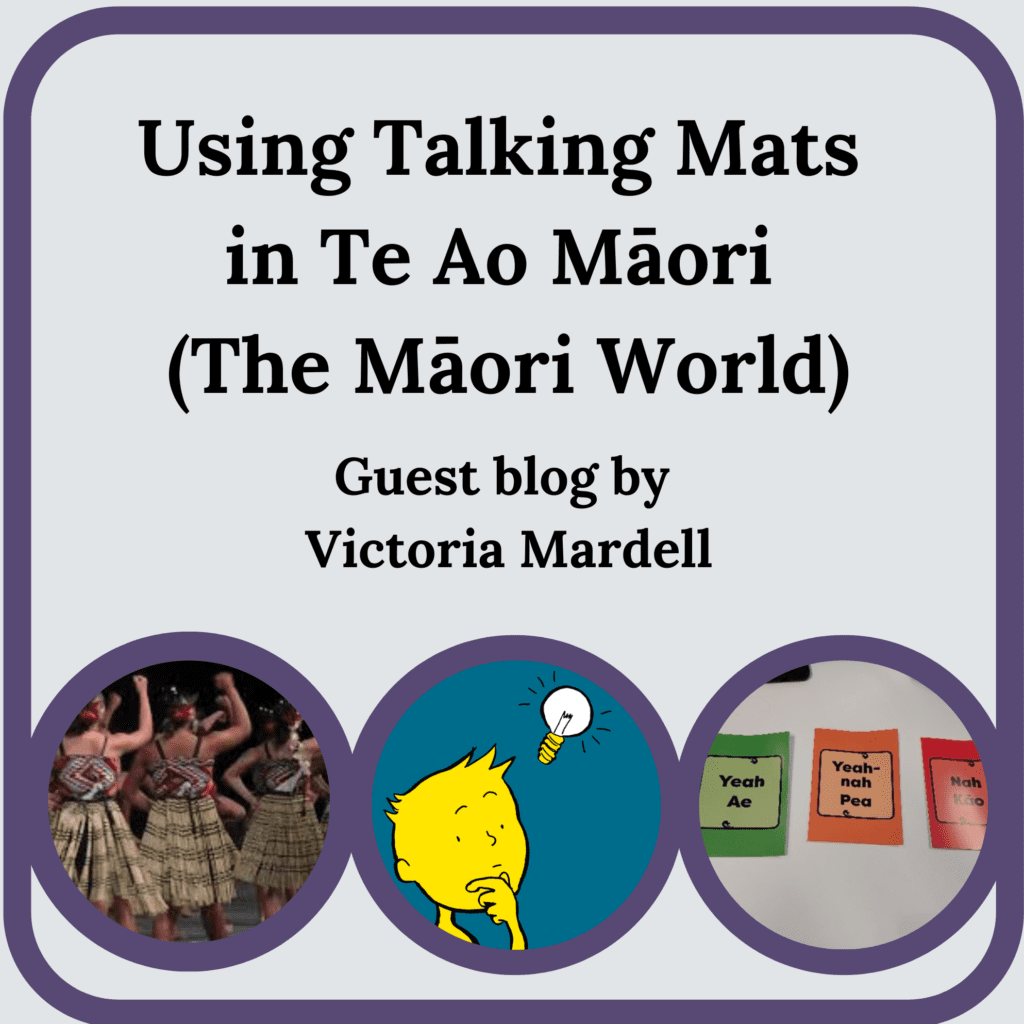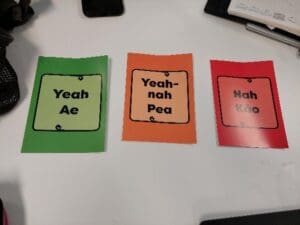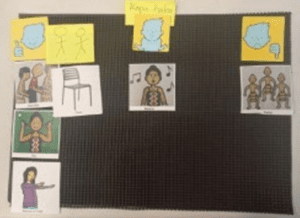
Can Talking Mats be a cross culture communication tool?
Talking Mats: developed in Scotland, embraced world wide with close working relationships in Japan, Sweden, Australia and New Zealand, but can the framework be adapted to reflect different approaches to communication that these diverse cultures embody? Victoria Mardell’s discoveries offer a fascinating insight into differences between Western communication and that of the Māori culture showing that the Talking Mats framework can be a cross culture communication tool.
Using Talking Mats in Te Ao Māori (The Māori World)
A Non-Māori SLT’s collaborative journey to deeper understand whether the Talking Mats process is culturally responsive to Māori
My Project
Working for the Aotearoa New Zealand Ministry of Education, I was approved to undertake a project which would investigate the suitability of Talking Mats to capture child voice.
A key part of this project was to review whether Talking Mats were culturally responsive to Māori and reflective of Māori worldview and if not, whether they could be altered accordingly.
This led to a rewarding journey for me as a non-Māori practitioner as I was able to collaborate with Māori colleagues and improve my cultural awareness. I got to experience Māori ways of gathering and acquiring information and I came away with new perspectives, which have shaped my practice.
Information Gathering: Learning About and Holding a Wānanga
To gather the information needed, it was suggested that I hold a wānanga. The word ‘wānanga’ would loosely translate as a “forum” in English. However, a more accurate description would be a collaborative process which involves engaging, sharing, and reflecting, with space for all viewpoints. A wānanga would often lead to the creation of new knowledge and decision-making.
This was my first experience with a wānanga and whereas Western ways of acquiring knowledge would likely have placed myself as an “expert”, seeking “feedback”, the wānanga was an unhurried deep discussion, in which all participants were partners, collaborating on an important subject.
Findings
There was overall agreement that Talking Mats are a good fit with Te Ao Māori.
Talking Mats were seen as a good way to promote Mana Motuhake (self-determination) and whakamana (giving prestige to children and their families).
Te Ao Māori (the Māori worldview) is strengths-based and the wānanga participants thought Talking Mats was a good fit with this approach.
Some considerations were discussed:
Codesigning the top scale: Participants discussed that concepts such as “going well” “not going well” are Western and that if a Talking Mat was used in a Māori kura (school), or with a Māori whanau (family), then categories might need to be adjusted or changed. This could be done via discussion and collaboration.
Māori colleagues have also shared some ideas with me for potentially suitable top scales:

(Sonja Macfarlane, 2021)
The key point was the importance of collaborating on the top scale rather than having this pre-determined before delivering the Talking Mat.
Being mindful about predetermination: Participants discussed how a practitioner turning up with a Talking Mat and a set of visuals might be seen as pre-determination and this could lead to discomfort and resistance. It would be more helpful if the practitioner facilitated a discussion, with the use of drawing visuals ‘on the fly’ as well as using the Talking Mats visuals. In practice this could look like a more collaborative process, with a greater input from the thinker in the early stage of the mat, rather than just at the end.
Action points may be strength-based rather than deficit-focussed: We discussed how there is a tendency in Western thinking to set goals or action points around improving things which the thinker has identified as not going well. However, in keeping with a Māori worldview, actions points might be to do more of what you already like, or to mentor others. We need to be careful that as practitioners, our unconscious bias is not inadvertently encouraging the thinker to focus on areas they have rated negatively.
Practice Example and Changes to my Practice
During the wānanga my former colleague, a Māori SLT, shared an example of a Talking Mat she had done about how a student wanted to participate in kapa haka (group performance of Māori dancing and chanting).
The SLT created her own visuals to reflect the kapa haka process. During conversation the SLT and student discussed how she could fatigue easily so the SLT drew an option to sit or stand. The action point was for the student to participate in waiata a-ringa (action song), with an option to sit if fatigued.

The process of considering Talking Mats through a Te Ao Māori perspective has changed my practice and I am grateful to my Māori colleagues for their time and insights. I am now more mindful when reviewing a Talking Mat, to make sure the action points are coming authentically from the thinker. I am also a lot more collaborative in the visuals and top scale of the Talking Mat. I have found that practising with more collaboration has led to better relationship building and more in-depth conversations.
Mauri Ora
Thank you to Victoria for her work on this blog. If you have any questions about this please contact us on info@talkingmats.com
 Online training login
Online training login 



